#Shoulder arthroscopy
Text
Advanced Shoulder Arthroscopy: Specialized Care at Kinvara Private Hospital
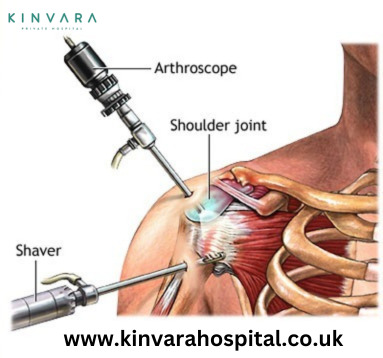
Discover advanced shoulder arthroscopy at Kinvara Private Hospital, where our specialized care combines cutting-edge techniques with personalized attention. Our expert team is dedicated to delivering the highest standards of precision and excellence, ensuring optimal outcomes for every patient.
0 notes
Text
Shoulder arthroscopy is a minimally invasive surgical procedure that has become a cornerstone in the treatment of various shoulder conditions.
0 notes
Text
Shoulder Arthroscopy: An Overview of Minimally Invasive Shoulder Surgery
Shoulder arthroscopy is a minimally invasive surgical procedure that allows doctors to examine and treat various conditions affecting the shoulder joint. It involves making small incisions in the skin and inserting a thin, flexible instrument called an arthroscope, which has a camera and a light source at its tip. The arthroscope transmits images of the inside of the shoulder to a monitor, which helps the surgeon guide the surgical tools and perform repairs.
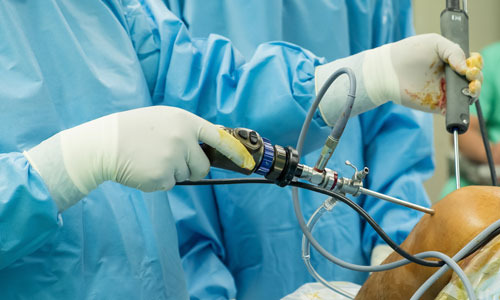
Some of the common reasons for shoulder arthroscopy are:
Rotator cuff tears: The rotator cuff is a group of muscles and tendons that surround and stabilize the shoulder joint. It can get torn due to injury, overuse or degeneration.
Shoulder instability: This occurs when the head of the upper arm bone (humerus) slips out of the socket (glenoid) of the shoulder blade (scapula), causing pain and reduced range of motion.
Shoulder impingement: This happens when the space between the acromion (a bony projection on the top of the scapula) and the rotator cuff narrows, causing inflammation and irritation of the tendons.
Bursitis: This is an inflammation of the bursa, a small sac of fluid that cushions and lubricates the joint.
Arthritis: This is a degenerative condition that causes cartilage loss, bone spurs and inflammation in the joint.
Shoulder arthroscopy has several advantages over traditional open surgery, such as:
Smaller incisions and scars
Less pain and bleeding
Faster recovery and return to normal activities
Lower risk of infection and complications
However, shoulder arthroscopy also has some limitations and risks, such as:
Not suitable for all types of shoulder problems
Possible damage to nerves, blood vessels or other structures
Possible stiffness, infection or recurrence of symptoms
Before undergoing shoulder arthroscopy, you will need to undergo some tests and preparations, such as:
Physical examination and medical history
Blood tests and imaging studies (such as X-rays, MRI or CT scan) to confirm the diagnosis and plan the surgery
Stopping certain medications (such as blood thinners or anti-inflammatory drugs) that may increase bleeding or interfere with healing
Fasting for several hours before the surgery
Arranging for someone to drive you home and help you with daily activities after the surgery
During shoulder arthroscopy, you will be given general or regional anesthesia to numb your shoulder and make you unconscious or relaxed. You will be placed in a semi-seated or lying position on a special table. Your surgical team will shave hair (if needed) and clean your skin with an antiseptic solution. They may place your arm in a traction device to pull it away from your body and create more space for the arthroscope. A healthcare provider may inject fluid into your shoulder to expand the joint and improve visibility.
The surgeon will make one or more small incisions (about half an inch each) around your shoulder and insert the arthroscope through one of them. The surgeon will then insert other instruments through other incisions to perform various procedures, such as:
Removing loose fragments of bone or cartilage
Repairing torn ligaments or tendons
Smoothing rough edges or removing bone spurs
Reshaping or replacing damaged parts of the joint
The surgeon will close the incisions with stitches or adhesive strips and cover them with bandages. The surgery usually takes one to two hours, depending on the complexity of the procedure.
After shoulder arthroscopy, you will be taken to a recovery room where your vital signs will be monitored. You may feel some pain, swelling or numbness in your shoulder, which can be relieved by medication. You will be given instructions on how to care for your wound, prevent infection, manage pain and perform exercises to restore your shoulder function. You will also be given a sling or a brace to support your shoulder and limit its movement for several weeks.
You will be able to go home on the same day or stay overnight in the hospital, depending on your condition and preference. You will need to follow up with your doctor regularly to check your progress and remove your stitches. You will also need to undergo physical therapy to regain your strength, flexibility and range of motion. The recovery time varies from person to person, but it may take several months before you can resume your normal activities.
Shoulder arthroscopy is a safe and effective way to diagnose and treat many shoulder problems. However, it is not a cure-all solution and it may not work for everyone. You should discuss with your doctor.
#orthopaedic doctor in magarpatta#orthopedic doctor in kharadi#orthopedic doctor in kondhwa#Dr. Rohit Chakor#orthopedic doctor near me#shoulder arthroscopy
0 notes
Text
Arthroscopy: Everything You Need to Know
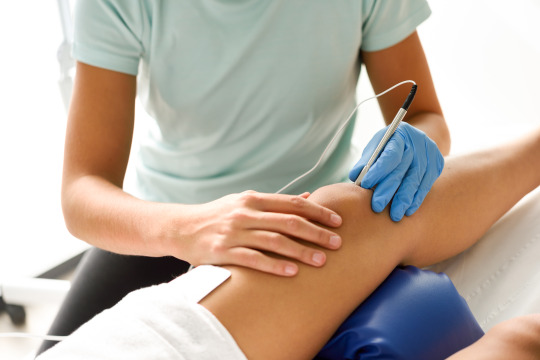
Arthroscopy, a minimally invasive surgical technique, has revolutionized how we diagnose and treat joint problems. Gone are the days of large incisions and lengthy recoveries; this high-tech procedure allows surgeons to peek inside a joint, perform delicate repairs, and get you back on your feet faster than ever before. But what exactly is arthroscopy, and how does it work? This comprehensive guide will answer all your questions and give you a clear understanding of this game-changing procedure.
What is Arthroscopy?
Arthroscopy, a surgical technique, has revolutionized the way we diagnose and treat joint problems. Imagine a tiny camera and surgical tools entering your joint through pin-sized incisions, allowing surgeons to visualize and repair internal structures with precision. This is the magic of arthroscopy, a procedure that has transformed the landscape of orthopedic surgery.
How Arthroscopy Works? Technique and Procedures
Arthroscopy utilizes a specialized arthroscope, a slender instrument equipped with a miniature camera and light source. This camera transmits live images of the joint interior onto a high-resolution monitor, guiding the surgeon's movements with unparalleled precision. Through additional tiny incisions, miniaturized instruments are inserted, allowing for diagnostic procedures like biopsies and therapeutic interventions like tissue repair or cartilage removal.
Advantages of Arthroscopy Over Traditional Surgery:
Compared to traditional open surgery, arthroscopy offers a multitude of benefits:
Minimally invasive: Small incisions reduce pain, scarring, and risk of infection.
Faster recovery: Less tissue disruption leads to quicker healing and earlier return to activity.
Reduced hospital stay: Outpatient procedures often eliminate the need for overnight hospitalization.
Improved visualization: Arthroscopic cameras provide magnified views of joint structures, enhancing diagnosis and surgical accuracy.
Less blood loss: Minimal tissue manipulation translates to less bleeding during and after surgery.
Common Types of Arthroscopy:
The versatility of arthroscopy extends to various joints, with knee and shoulder arthroscopy leading the way.
A. Knee Arthroscopy:
Conditions Treated: Meniscus tears, ligament injuries, cartilage damage, patellofemoral pain syndrome, joint instability.
Procedure Overview: Arthroscopic instruments are used to repair or remove damaged meniscus tissue, reconstruct ligaments, smooth cartilage irregularities, realign the kneecap, and stabilize the joint.
“Knee Replacement Surgery is a surgical procedure that involves replacing a damaged or worn-out knee joint with an artificial joint. A procedure that helps in relieving pain and functionality of a deceased knee joint.” says Dr. Priyank Gupta from HCG Hospitals.
B. Shoulder Arthroscopy:
Conditions Addressed: Rotator cuff tears, labral tears, shoulder instability, impingement syndrome, frozen shoulder.
Surgical Process: Arthroscopic tools facilitate repair or reattachment of torn rotator cuff tendons, trimming of labral tears, capsular tightening for stability, and removal of bone spurs causing impingement.
Procedure Details of Arthroscopy:
Before Arthroscopy:
Consultation and Diagnosis: Your doctor will discuss your symptoms, medical history, and perform necessary examinations to diagnose the joint issue and determine if arthroscopy is the right treatment.
Anesthesia: You'll receive general, regional, or local anesthesia to numb the area and ensure comfort during the procedure.
Preparation: The area around the joint is shaved and prepped with sterile solution.
During Arthroscopy:
Incisions: Your surgeon makes small incisions (about the size of a buttonhole) around the joint.
Arthroscope Insertion: A thin tube with a camera and light source (arthroscope) is inserted into one incision, providing a magnified view of the joint on a monitor.
Treatment: Depending on the issue, your surgeon may perform various procedures like repairing cartilage tears, removing inflamed tissues, or reconstructing ligaments using specialized instruments inserted through other incisions.
After Arthroscopy:
Recovery: You'll likely stay in the hospital for a few hours or overnight for observation.
Pain Management: You'll receive medication to manage pain and inflammation.
Rehabilitation: Physical therapy exercises are crucial to regain strength and flexibility in the joint.
Benefits and Risks of Arthroscopy:
While arthroscopy boasts significant advantages, it's essential to consider potential risks:
Benefits of arthroscopy:
Faster recovery and reduced pain.
Lower risk of infection and complications.
Minimized scarring and tissue disruption.
Early return to work and activities.
Risks of arthroscopy:
Potential for incomplete repair requiring additional surgery.
Infection, although rare.
Nerve or blood vessel injury, uncommon but possible.
Is Arthroscopic Surgery Right for You? Factors to Consider
Arthroscopic surgery is not suitable for everyone and depends on various factors, such as:
The type and severity of the joint problem
The age and health condition of the patient
The goals and expectations of the patient
The alternatives and options available for the patient
To decide on arthroscopic surgery, the patient should consult with a doctor who specializes in arthroscopic surgery and discuss the following aspects:
The diagnosis and prognosis of the joint problem
The benefits and risks of arthroscopic surgery
The preparation and procedure of arthroscopic surgery
The recovery and rehabilitation of arthroscopic surgery
The cost and insurance coverage of arthroscopic surgery
Conclusion
Arthroscopy has revolutionized joint surgery, offering a minimally invasive and effective approach to diagnosing and treating various conditions. With continuous advancements in technology and techniques, the future of arthroscopy is brimming with possibilities for faster, safer, and more personalized joint care. Remember, informed decision-making is key. Consult your doctor, discuss your options, and choose the best path to reclaim your joint health and regain your mobility.
#arthroscopy#orthopedic surgery#knee arthroscopy#shoulder arthroscopy#arthroscopic technique#knee cartilage treatment#frozen shoulder treatment
1 note
·
View note
Text
Conditions Treated With Arthroscopy
Arthroscopy is a marginally invasive surgical procedure that entails monitoring joints with an instrument, known as arthroscopy. Arthroscopy is performed by a physician to examine the joint and correct certain types of joint injury. Arthroscopy is usually suggested for musculoskeletal disorders when nonsurgical treatments such as rest, braces or splints, medicines, steroid injections, and physiotherapy are insufficient.
Arthroscopic surgery can be used to treat a variety of musculoskeletal problems affecting joints such as the shoulder, knee, ankle, elbows, thigh, and forearm.
Local, or spinal anesthesia is usually provided during arthroscopic surgery. The physician makes a small incision within your skin. The doctor inserts an arthroscope through this incision. Your surgeon will next make another incision through which a probe will be employed. The light is sent to the end of the arthroscope implanted into your joint via an optic line. The information inside your joint could be sent and observed on a monitor. After the surgery, the incisions are closed with stitches or sterile adhesive tapes.
Inflammations, Injuries are most frequently identified with arthroscopy.
Because arthroscopic surgery needs only one or two minor incisions as opposed to open surgery, it provides faster healing, shorter hospital stays, and less pain, and scarring.
In general, you should be capable of resuming normal daily activities and light activities within a few days. Rehabilitation or particular workouts can help you heal faster. Which ones are appropriate to perform will be determined by your doctor.
Visit the Best Orthopedic clinic in Bangalore. In Orth One Plus Clinic, our team is dedicated to providing you with compassionate treatment and cutting-edge medical technology. We look forward to offering you the finest musculoskeletal treatment available to heal your joint injuries and problems.
#jointreplacement#Arthroscopy#orthopaedicsurgery#arthroscopy treatment in kolkata#best arthroscopy doctor in kolkata#shoulder arthroscopy#arthroscopy devices
0 notes
Text
Using Large Femoral Head as A Bearing Surface in Total Hip Arthroplasty - Juniper Publishers
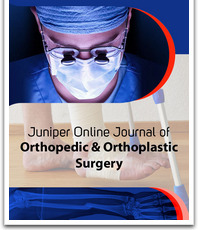
Background
Owing to recent improvements in the quality, shape and surface area of the implants for total hip arthroplasty, wear problems, which is one of the chronic complications of total hip arthroplasty, have been solved up to a certain level. However, instability and dislocation of the implants, which is the second most common complication after component loosening, remain unsolved, negatively affecting quality of life and furtherly causing failure of implants. Using femoral head implants smaller than the patient’s natural femoral head is a major cause of dislocation. We would like to discuss several issues of using large head implants as a bearing surface.
Wear
Contact surface and sliding distance are major factors in the occurrence of wear particles. As the diameter of the femoral head increases, contact area and the sliding distance of the articular surface also increase. Though the degree of wear may differ by material, this increase also leads to increased volumetric wear, according to the formula υ=πγ2w (υ, volume of debris from wear; γ, radius of the femoral head; w, linear migration distance of the femoral head). Grinding and adhesion between the femoral head and the acetabular cup is the main mechanism of wear after total hip arthroplasty. In terms of wear, the sliding distance and the repetition of sliding is more important than the load given to the hip joint [1-4]. In case of metal-on-polyethylene implants, volumetric wear increase about 7.5% to 10% for each 1mm increase in femoral head diameter [1]. Frictional torque, which increases proportionally to the femoral head size, is an important factor in the destruction of the contact area between the component and the bone, and in the loosening of the component [5-8]. However, if an articular surface is resistant to wear and enables stable fixation between the component and bone while being minimally affected by changes in femoral head size, using large head implants during total hip arthroplasty may be promising due to its high stability. Therefore, choosing articular surfaces which are highly resistant to wear is a key prerequisite for the use of femoral head implants larger than 36mm [9-10].
Dislocation
Hip joint dislocations are caused by 3 factors; patient-related, operative-related, and implant-related. Implant-related factors include femoral head size, head-to-neck ratio, head-to-metal shell size, and types of the inner liner [11-13]. Compared to small femoral heads, large femoral heads require longer distances of displacement to be dislocated, and thus is more stable. Other advantages of large femoral heads include [1] increased range of motion (ROM) in any direction, [2] decreased component-to-component impaction and while delayed bone-to-bone impingement, proper debridement of the bone causing impaction leads to increased joint motion [3] No need for the use of skirts, which are used with long-neck implants to increase stability of trunnion and femoral head socket area (due to relative increase in head-to-neck ration). For each 1mm increase in femoral head diameter, the ROM in any direction increases by 0.84±0.43 degrees, and the peak moment which resists to dislocation increases by 3.6%. Compared to 32mm-diameter femoral heads, 38mm- and 42mm-diameter femoral heads show increase in ROM of 6% and 16% respectively.
Wear on Trunnion-bore Interface
Morse tapers achieve stability by the cone-in-cone principle, which is caused by compression between the trunnion and the femoral head socket wall. While intimate conical connection between the trunnion and the bore may enable firm contact, ingress and micromovement of the fluid may occur during cyclical mechanical loading due to preexisting microscopic gaps (crevice) on the matins surface of male and female cones. This may lead to disruption of the passive surface oxide layer and susceptibility to mechanically assisted crevice corrosion (MACC, tribocorrosion). Taper design, metal-alloy mismatch (Galvanic corrosion), implant positioning, joint loading magnitude, numbers of loading cycles, frictional torque at the bearing surface, patient and surgical factors (tissue interpositioning, failure to achieve initial engagement) are associated with the development and deterioration of MACC. Particulate debris and metal ions are released through mechanical and corrosive mechanism, and may lead to several adverse tissue reactions, and in severe cases, may case mechanical failure at the taper junction. The use of larger femoral heads increases frictional torque, and this results in additional stress at the taper junction, especially in metal-on-ceramic or ceramic-on-ceramic bearing surfaces, rather than metal-on-polyethylene or ceramic-onpolyethylene bearing surfaces. Also, increased offset between the head center and the trunnion interface center of pressure increases the bending moment, and leads to micromotion between male and female tapers, and may trigger trunnionosistype wear. These reasons provide theoretical support for why the reactions which occur on metal-on-polyethylene bearing surfaces due to metal debris from the taper junction are similar with local adverse tissue reactions caused by metal particles from metal-on-metal bearing surfaces [14-20].
While the increase in femoral head size from 32mm to 36mm leads to 10% improvement in stability, the increase in femoral head size from 40mm to 48mm only leads to 4.7% improvement. This indicates that the increase of femoral head size beyond a certain level may not significantly influence on stability. On the other hand, the peak stress imposed on the trunnion during ambulation increases as the femoral head diameter increases. Compared to 32mm-diameter femoral heads, 40mm-, 44mm- , 48mm-, 52mm-, and 56mm-diameter femoral heads showed peak stress increment of 3.5%, 9.5%, 24%, 40%, and 51% respectively. Considering pros of stability and cons of trunnionrelated problems, the use of femoral heads smaller than 40mm is recommended.
Conclusion
Femoral heads larger than 32mm in diameter offer multiple advantages in terms of both function and activity, including improved hip joint stability, decreased dislocation rate, and increased ROM. However, various concerns, including wear generation at the trunnion-bore interface and increased component-bone interface stress due to additional frictional torque, should always be considered when using large femoral head implants. Considering the benefits in stability and trunnion-related problems, femoral heads smaller than 40mm are recommended to be used for total hip arthroplasty.
For More Open Access Journals in Juniper Publishers Please Click on https://juniperpublishers.com/journals.php
For more articles, Please click on Juniper Online Journal of Orthopedic & Orthoplastic Surgery
https://juniperpublishers.com/jojoos/JOJOOS.MS.ID.555578.php
0 notes
Photo

Shoulder Arthroscopy Cadaver course teaching young budding arthroscopy surgeons technical skills in shoulder arthroscopy.
0 notes
Text
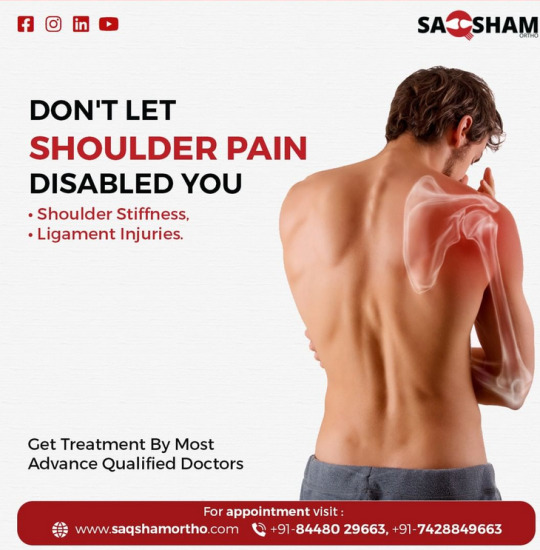
#shoulder arthroscopy#best orthopedic surgeon#orthopaedicsurgery#bone specialist#bone hospital#bestorthopedicingurgaon#bestorthopedicdoctor#orthopedic surgeon#orthopedic specialist
0 notes
Text

Dr Vishwadeep Sharma is Director of Arthroscopy & Sports Injuries, Shoulder & Knee Surgeon Fortis Hospital Vasant Kunj and he is associated with hospital since 2013. He specializes in Shoulder, Knee & Sports Injuries. With more than 15 years of dedicated experience in Arthroscopy of the Shoulder & Knee. Dr Sharma has keen interest in Sports injuries with many years of experience in treating young athletes and players involved in various professional Sports. He is one of the best Orthopedic surgeon in Delhi.
#Shoulder Dislocation treatment in Delhi#Rotator Cuff Tear Treatment in Delhi#Shoulder Fracture treatment in Delhi#Shoulder Replacement Surgery in Delhi#Reverse Shoulder Replacement surgery Delhi#Frozen Shoulder Treatment in Delhi#Knee Replacement surgery in Delhi#Knee Arthroscopy surgery in Delhi#ACL Reconstruction Surgery in Delhi#PCL Reconstruction Surgery in Delhi#Orthopaedic surgeon in Delhi#Re-doing Failed Shoulder Surgery in Delhi#Mensicus repair Surgery in Delhi#Injury Specialist in Delhi#Cricket related injuries
2 notes
·
View notes
Text
Joint replacement surgeon in Bangalore
Rotator cuff tears
Rotator cuff tears is one of the most common causes of shoulder pain. A torn rotator cuff can also cause weakness of the shoulder.
Our shoulder joint is like a ball (the upper end of the humerus bone) and socket (glenoid). The ball is larger than the socket. The Rotator Cuff muscles are those muscles that surround the shoulder joint. There are four muscles, which combine to form a sheet of tendon and attach on to the upper end of the humerus bone.Their job is to provide the power to lift and rotate the arm and to make sure the ball is within the socket while moving the shoulder.
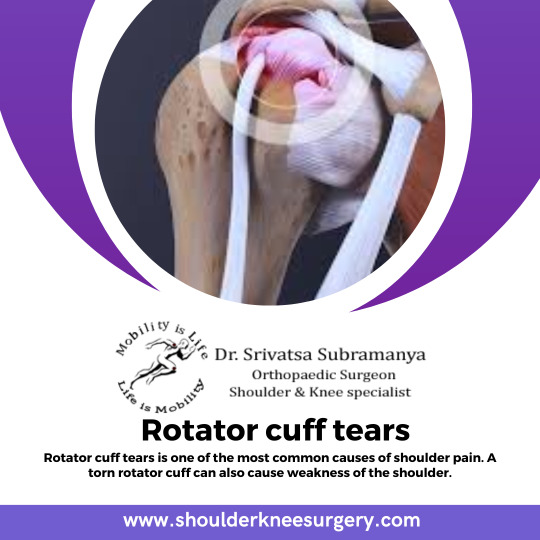
#shouldersurgery#shoulder#rotatorcuff#surgery#shoulderpain#physicaltherapy#orthopedicsurgery#orthopedics#sportsmedicine#kneesurgery#arthroscopy#orthopedicsurgeon#kneereplacement#surgeon#orthopedic#backpain#shoulderrehab
2 notes
·
View notes
Text
Unparalleled Expertise in Shoulder Arthroscopy: Kinvara Private Hospital's Signature Approach

Experience unparalleled expertise in shoulder arthroscopy at Kinvara Private Hospital. Our renowned specialists combine cutting-edge techniques with personalized care, ensuring optimal outcomes for every patient. Trust in our signature approach to shoulder health and discover a new standard of excellence.
0 notes
Text
Best Orthopedic and shoulder specialist Surgeon in Baner | Dr. Ishan Shevate
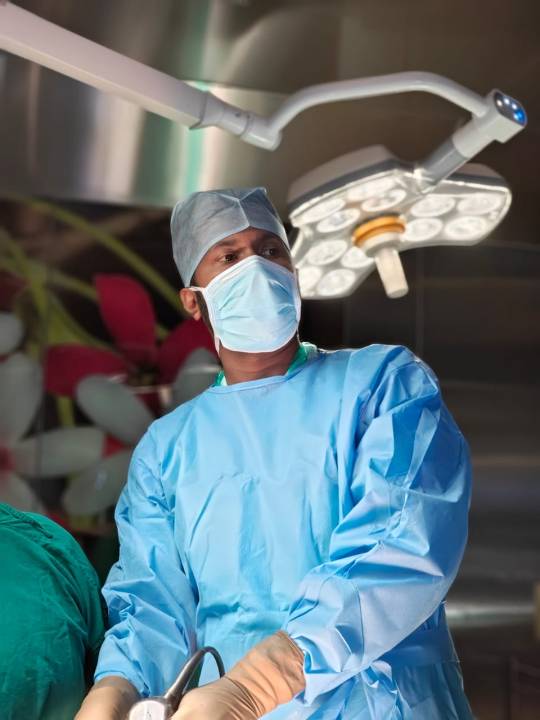
Introduction:
When it comes to orthopedic care, especially for shoulder injuries and sports-related conditions, you want to make sure you're in the hands of an expert. If you are in Baner, Balewadi or Pune, Dr. Ishan Shevate is one of the best orthopedic doctors and shoulder specialists.
Who is Dr. Ishan Shevete?
Dr. Ishan Shevate is a highly qualified and experienced orthopedic surgeon based in Baner. His educational background and professional journey highlight his dedication and expertise in the field of orthopedics and sports medicine.
Educational background
MBBS: Dr. Ishan Shevate has completed the prestigious B.J. of Pune. Completed his primary care degree from Government Medical College and Sassoon General Hospital.
MS in Orthopedics: He pursued postgraduate studies at the internationally recognized Sancheti Institute of Orthopedics and Rehabilitation in Pune.
International qualifications
MRCS, Edinburgh: To further enhance his skills and knowledge, Dr. Ishan Shevate sat the Intercollegiate Examination of the Royal College of Surgeons in Great Britain and Ireland and obtained Membership from the Royal College of Surgeons (MRCS), Edinburgh, Scotland. Earned Diploma.
fellowship training
Dr. Ishan Shevate's commitment to advanced training is evident through his many fellowships:
Hinduja Hospital, Mumbai: Under the guidance of Dr. Abhay Narvekar, a pioneer in shoulder and knee arthroscopy in India.
Arthroscopy and Sports Medicine Fellowship: Trained under expert Dr. Umesh Jadhav in Pune.
Sports Injuries Fellowship: Completed 1 year certificate course in Sports Injuries at Dr. DY Patil Hospital and Medical College, Pune. additional certificate
Diploma in Sports Medicine: Awarded by FIFA, this course provided Dr. Ishan Shewate with specialized knowledge in the management of sports injuries, especially in football.
Areas of expertise
Dr. Ishan Shevate has honed his skills in various aspects of orthopedic and sports medicine, with a special focus on the following:
Arthroscopy: Minimally invasive surgical procedures are used to diagnose and treat joint problems.
Shoulder Surgery: Specializing in the treatment of shoulder injuries and conditions.
Sports Injury Management: Comprehensive care for athletes, helping them return to their sport as quickly and safely as possible. treatment approach
Dr. Ishan Shevate believes in a patient-centered approach, emphasizing conservative management and physiotherapy rehabilitation. This means that whenever possible he prefers non-surgical methods to help patients recover from traumatic injuries, sports injuries and degenerative diseases.
conservative management
Conservative management includes:
Physiotherapy: Customized rehabilitation program to restore function and strength.
Lifestyle Modifications: Advice on activities and exercises to prevent further injury.
Medication: Pain management and anti-inflammatory medications as needed.
surgical expertise
When surgery is necessary, Dr. Ishan Shevate adopts the latest techniques and standards, ensuring that the results are at par with best practices in Western countries.
Patient Success Stories
Dr. Ishan Shevate's patients often praise his compassionate care and effective treatment plans. Thanks to their expertise and dedication many people have returned to their daily routines and sporting activities.
Why choose Dr. Ishan Shevate?
Comprehensive Care: From diagnosis to rehabilitation, Dr. Ishan Shevate provides holistic care tailored to the needs of each patient.
Expertise: With extensive training and international qualifications, Dr. Ishan Shevate is well-equipped to handle complex orthopedic cases.
Patient-Centered: He focuses on conservative treatments and individualized care plans, ensuring that patients receive the best possible outcomes.
If you're in Baner, Pune and need orthopedic care, especially for shoulder injuries or sports-related problems, Dr. Ishan Shevate is a trusted specialist who can help you get back on track. Are. Whether you are an athlete dealing with a sports injury or someone in need of advanced orthopedic treatment, Dr. Ishan Shevete's expertise and compassionate care make him the ideal choice.
For more Information:
E mail : [email protected]
Mobile Number: 9405783493
Address: office no, 203, 2nd floor, Synergy Clinic, Krishna Avenue, opp. D- mart, above Dominos, Veerbhadra Nagar, Baner, Pune, Maharashtra 411045
#orthopedic doctor#Orthopedic Specialist in Baner#Arthroscopy Surgeon in Pune#Sports Injury Specialist#Shoulder Surgeon
0 notes
Text
Who Is The Best Knee Arthroscopy Surgeon In Jaipur?
When it comes to orthopedic surgeries, particularly knee arthroscopy, finding the right Knee Arthroscopy Surgeon in Jaipur is paramount. In Jaipur, a city known for its rich cultural heritage and emerging medical facilities, the quest for the best knee arthroscopy surgeon can be both daunting and crucial for patients seeking optimal outcomes. In this guide, we'll navigate through the factors to consider and highlight some top contenders in the field.
Understanding Knee Arthroscopy
Before delving into the search for the best surgeon, let's grasp the essence of knee arthroscopy. It's a minimally invasive surgical procedure performed to diagnose and treat various knee conditions, including torn cartilage, ACL tears, and meniscal injuries. Unlike traditional open surgery, knee arthroscopy involves small incisions and specialized instruments, resulting in less pain, faster recovery, and reduced risk of complications.
Qualities of the Best Knee Arthroscopy Surgeon
Expertise and Experience: Look for surgeons who specialize in knee arthroscopy and possess extensive experience in performing these procedures. Experience often correlates with skill and proficiency in handling complex cases.
Board Certification: Ensure that the surgeon is board-certified in orthopedic surgery. Board certification indicates that the surgeon has met stringent standards of training, competency, and ethical practice.
Patient Reviews and Testimonials: Pay attention to patient feedback and testimonials. Positive reviews reflect patients' satisfaction with the surgeon's care, skill, and bedside manner.
Facility and Technology: Consider surgeons affiliated with reputable hospitals or clinics equipped with state-of-the-art facilities and advanced technology. A well-equipped facility enhances the surgical experience and improves patient outcomes.
Communication and Compassion: Opt for a surgeon who communicates effectively, listens to your concerns, and demonstrates empathy. A compassionate surgeon who values patient education and involvement in decision-making fosters trust and confidence.
Top Knee Arthroscopy Surgeons in Jaipur
Dr. Ashish Rana- With over two decades of experience in orthopedic surgery, Dr. Ashish Rana is renowned for his expertise in knee arthroscopy. He is known for his compassionate approach and commitment to patient care. Affiliated with leading hospitals in Jaipur, Dr. Ashish Rana has garnered praise from patients for his surgical skills and dedication.
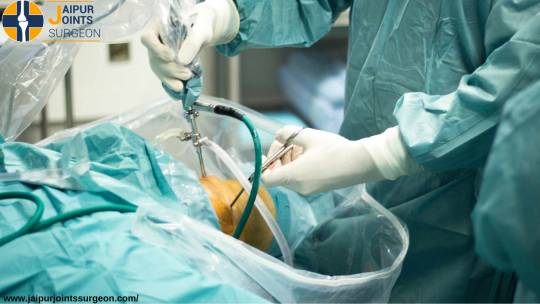
Dr. Priya Singh - Dr. Singh is a board-certified orthopedic surgeon specializing in knee arthroscopy. Her comprehensive approach to patient care, coupled with her proficiency in minimally invasive techniques, has earned her a reputation as one of the best in Jaipur. Patients appreciate her personalized attention and thorough explanation of treatment options.
Dr. Vikram Rathore - With a focus on innovation and excellence, Dr. Rathore is recognized for his expertise in knee arthroscopy and sports medicine. He is known for staying abreast of the latest advancements in orthopedic surgery and tailoring treatment plans to meet individual patient needs. Dr. Rathore's commitment to delivering optimal outcomes has made him a preferred choice among patients seeking knee arthroscopy in Jaipur.
Conclusion
Choosing the best Orthopedic Doctor in Jaipur requires careful consideration of various factors, including expertise, experience, patient feedback, and facility quality. By prioritizing these criteria and exploring the top contenders in the field, patients can make informed decisions that lead to successful surgical outcomes and improved quality of life. Whether it's Dr. Ashish Rana , Dr. Priya Singh, Dr. Vikram Rathore, or another esteemed surgeon, the key lies in finding a skilled professional who aligns with your needs and values, ensuring a positive surgical journey.
Social Links –
Facebook - https://www.facebook.com/orthopaedicsurgeonjpr/
Instagram - https://www.instagram.com/drashishrana/
0 notes
Text
Dr Manish Vaishnav - ligament surgeon in Jaipur
Dr Manish Vaishnav - ligament surgeon in Jaipur, ACL Doctor in Jaipur, shoulder surgeon in Jaipur
Regain full function of your shoulder with soft robotic shoulder replacement surgery at NEO JOINTS!
If you're experiencing any of these conditions, it might be time to consider shoulder replacement:
Severe Fracture Of The Shoulder
Tumor Around The Shoulder
Avascular Necrosis
Post Traumatic Arthritis
Rotator Cuff Arthropathic
Rheumatoid Arthritis
Book an appointment with Dr. Manish Vaishnav, a specialist in soft robotic knee replacement, for personalized care and expert treatment.
+91-9001740688
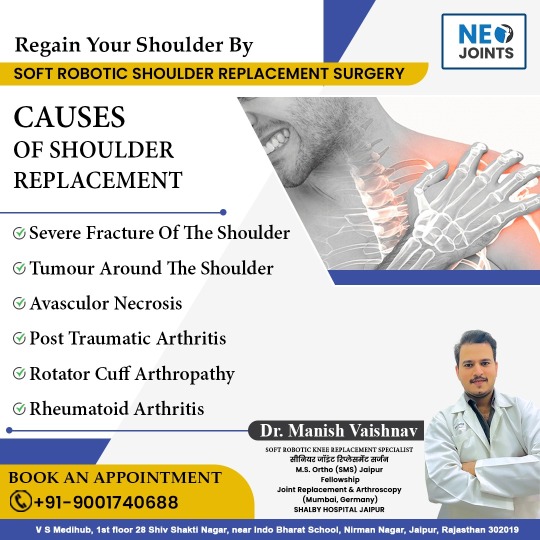
Dr. Manish Vaishnav Consultant Arthroscopy & Shoulder Surgery, Shelby Hospital, Jaipur Best Orthopedic Surgeon in Jaipur Dr. Manish Vaishnav Best Ligament Surgeon in Jaipur:- We are specializes in treatment of Hip, Knee, Shoulder and Regenerative Medicine. Latest medical technology with the state of art medical facility to provide his patients the best possible outcome. He Is the Best Orthopedic Doctor In Jaipur, Shoulder Surgeon In Jaipur Dr. Manish Vaishnav is a Master Instructor with the Arthroscopy Association of India. He has treated close to 500 Professional and Olympic athletes successfully. Arthroscopy Surgeon in Jaipur, Hip & Knee Replacement Surgeon in Jaipur
0 notes
Text
https://www.drapoorvdua.com/post/physiotherapy-for-relieving-pain-and-treating-shoulder-injuries
#orthopaedic doctor in south delhi#orthopaedic surgeon in south delhi#orthopaedics in south delhi#Shoulder Arthroscopy in south delhi#Shoulder injury treatment in south delhi
0 notes